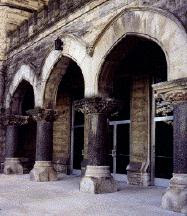From the abstract:
In the middle of 60's P. Cohen proved the independence of CH. The method of forcing that he developed for this problem was later rewritten in terms of Boolean-valued models of set theory by D. Scott and R. Solovay. In the middle of 70's I proved that Boolean-valued models of the field of real numbers are exactly the universal K-spaces. This fact did not only give a rigorous mathematical formulation to the problem of Kantorovich, but also allowed to transfer many properties of real numbers to K-spaces. In particular, it allowed generalizing a lot of theorems about linear functionals on operators with the values in Kantorovich spaces.
Many results in this area were obtained by functional analysts from Novosibirsk. However, this method did not become popular among specialists in analysis, since it requires a deep knowledge of mathematical logic, especially of the axiomatic set theory.
Recently, I found an exposition of this method that seems to me quite accessible for non- specialists in mathematical logic. I will try to explain the basic ideas of this method (including the idea of the independence proof of CH) in two consecutive talks.


